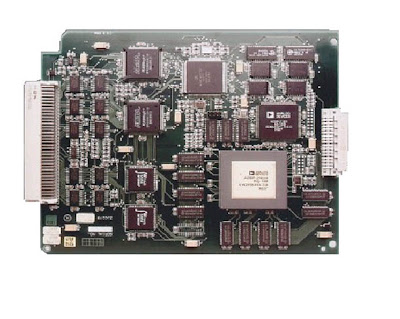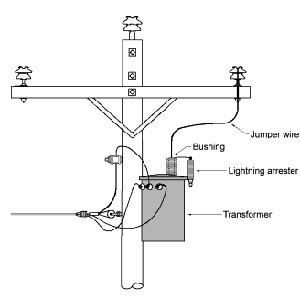Lightning antidote to the House
Lightning rod consists of a simple metal bars that are on higher ground than the building, which connects the lightning towards the ground electrode by means of the connecting wire. This tool is able to prevent high current passing through the building, which could result in fire, or endanger the occupants. Lightning can be very dangerous; when lightning release, this tool can create a very high voltage between the conductors to the ground.
Lightning rod that is more modern electrical devices used on the system. This tool will divert lightning and move the high-voltage current into the ground before damage to the electrical device.
Thunderstorms and Wire TransmissionWhen lightning directly on the wire transmission, which contain a large electrical currents, then there will be a voltage in a very large number of wire to the ground. Dielectric strength of air will overflow and pass flashover. Wire will heal by itself and the exc
ess voltage will disappear in less than 5 μs.
However, the sparks generated by the lightning current will produce a high ionization between the wires and the ground, which works like a short circuit. Consequently teagnagn normal alternating current will flow back and forth followed by a large ionized flow. Flows like this will not dampen the sparks until the circuit breaker to open at the bas
e end of the wire. Circuit breakers will flow fastest in 1 / 60 second, which is equivalent to 16,000 μs after lightning struck the wire.
Lightning strikes directly on the wire transmission is rare, most often, the lightning will grab the ground wire that protects the transmission wire. In the latter case, the local current is still flowing on the wire, which produces very high local stress. Concentrated flow will be divided into two waves moving in opposite directions near the speed of light (300 m / μs). High voltage is an impulse wave that emerged from point to another, between the wire and ground Peak voltage (refer to the crest of a wave) can force one / two million volts. Ab gathered in front of the wave range of 300 m, while the tail bc several kilometers.
Waves that represent the point value per point of the current flowing in the wire. Most wire air, the ratio between surge voltage and surge current equivalent of about 400 Ω resistance. Voltage of 800,000 volts of pressure at some point will be followed by the current pressure on the 800.000/400 = 2,000 A.
During the wave goes through the wire, and I2R losses in the corona gradually come down, and followed by a drop in peak voltage.
When the wave reaches the insulator, the insulator will experience a large excess voltage. This period of rest is the voltage equivalent to the time it took the wave to reach the insulator. Voltage rises from its nominal value to hundreds of kilo-volt in 1 μs, corresponding to the wavelength of the front ab. If the insulator is not able to withstand the excess voltage, the flashover occurs, and generate currents that drive next-breaker will cause the circuit to work. On the other hand, if the insulation resistance, the wave will continue to run along the wire until it finally reached the substation. And this wave of impulse will result in damage.
Winding transformers, condensers, reactors and others, will be severely damaged if the experience flashover to ground. The cost of expensive repairs and even total destruction would make such a device can not function anymore. Excess stress can cause damage to the circuit breakers, separators, insulators, relay and others, which is a substation devices. To reduce the impulse voltage on the substation, lighting arresters (LA) is installed on all the wires that go into substation.
LA is designed to prevent the peak voltage that exceeds a certain level, such as 150 kV. Instead, the device in the substation is designed to resist the impulse voltage is higher than the lightning rod, such as 650 kV. Thus, if the voltage of 1000 kV substations into, LA it will divert most of the energy that comes into the ground. Residual impulse wave passing through LA would have the strength of 150 kV. The device is designed substation 650 kV impulse withstand.













 Such transfer will cause an electric field inside the cloud. In addition, the negative charge at the base of the clouds refused to free electrons that exist underneath. As a result, the T becomes positively charged, due to induction. It will be formed an electric field and other potential between the cloud base and earth. So, appears an electric field between the electrons are repelled from the region T, with a positive charge at the top of the cloud.
Such transfer will cause an electric field inside the cloud. In addition, the negative charge at the base of the clouds refused to free electrons that exist underneath. As a result, the T becomes positively charged, due to induction. It will be formed an electric field and other potential between the cloud base and earth. So, appears an electric field between the electrons are repelled from the region T, with a positive charge at the top of the cloud.